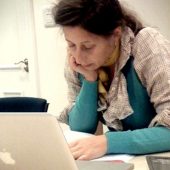Overview
Theatre and dance have fallen a long way behind music in the way they connect with audiences digitally. A 2010 Arts Council report on digital arts audiences found that only eight percent of users had watched a full arts performance/exhibition online; of these, 81 percent related to music and only 27 percent were theatrical. Is there something fundamentally incompatible between digital technology and live theatre and dance? Or is it just that the right digital tools have yet to be invented?
The Battersea Arts Centre (BAC)’s Scratch Online platform aims to support artists using digital formats to engage audiences in the creative process, allowing them to actively seek feedback on ideas, and open up the creative process to audiences. Online platforms hosting user-generated content comprise half of the 20 most visited English language websites: it’s this type of online engagement and participatory culture (think YouTube, Facebook, and Twitter) that the platform will be exploring in order to facilitate online participation.
However, while online engagement is increasing on all fronts, suggesting more widespread uptake of increasingly sophisticated creative practices, the specific domain (theatre /dance) clearly poses significant challenges to audience participation. This represents an opportunity to test the proposition: if suitable digital tools are provided that are fit-for-purpose for documenting the processes of creating theatre and engaging audiences in the creative process — will new practices emerge and new audiences engage theatres and artists via digital content?
This is part of a broader research question which is of interest to social informatics researchers: when existing non-digital practices (in this case artistic and theatrical production practices) are enhanced, augmented or replaced with digital tools and techniques, what are the consequences for participation, practice, and behaviour? Even seemingly simple digital interventions have widespread consequences in terms of the work people do — changing responsibilities and priorities, the speed and scale of work, and the ability of people to imagine new possibilities afforded by technology while at the same time maintaining existing professional practices and standards.
Research Questions
Our research questions are balanced between understanding how the BAC Scratch Online process impacts the work, behaviour and creativity of artists; understanding its impact on theatre organizations; and understanding the ability of these methods to engage with new and existing audiences. In addition, the current literature examines almost exclusively single-user creative outputs, rather than complex collaborative co-creation of artistic works such as a play. Specific research questions include:
- What new social actors are involved in the digital process compared to the traditional process? Are any formerly involved people excluded?
- What completely new activities are available only because of the affordances of the technology? How are they viewed by artists, theatre organizations, and audiences?
- What difficulties arise primarily as a result of the technological intervention? For example: does the technology intervention disrupt existing organizational structures and practices? Have any unexpected audience barriers been raised because of the technology?
- What evidence is there to show that new audiences are engaged because of the outreach of the technology? What quantitative and qualitative evidence available via webmetrics and content analysis is able to demonstrate successful engagement with new and existing audiences?
These research questions will form the core of the final report, which will also include recommendations for best practice in using technology to expose the process of theatrical production.
Cases and Methodology
This project will use a mixed-method embedded case study approach involving several data sources. There are four embedded case studies:
- Digital natives with strong experience in digital technology.
- Digital novices with little or no experience of digital technologies.
- Virtual collaborators who are working in different geographical areas.
- Traditional Scratch production (control case).
Comparison across the four embedded cases will enable the research team to understand the role of technology, technology literacy, and distance and collaboration, and the extent to which these factors have implications for artists, organizations, and audiences. Specific research methods include:
- Semi-structured interviews with lead artists and other key project personnel such as video producers and organization staff, for each case.
- Observations of the Digital Scratch process will use ethnographically informed observation methods to enable the research team to see how the productions happen.
- Focus groups with artists, technical participants, and audience members.
- Web-based evidence including analytics, webmetrics, and content analysis data will be collected using the methods outlined in the Toolkit for the Impact of Digitised Scholarly Resources (TIDSR) resource to identify online evidence of impact for the Scratch Online materials throughout the project.
Partners and Funders
This project is a partnership with Oxford University Consulting. It is funded by NESTA, the AHRC, and the Arts Council of England.


